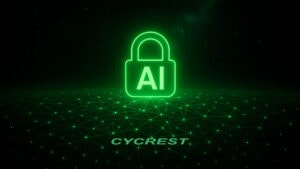It’s been the darling of the cybersecurity world for over a decade: the “human firewall.” Train your people, the thinking goes, and they’ll spot phishing attacks, avoid malicious links, and single-handedly hold the line against modern cyber threats.
It’s a comforting story — albeit one that happens to be dead wrong based on recent research.
While companies have been investing heavily in lunchroom posters and quarterly click-through quizzes, threat actors have been evolving.
Here’s the uncomfortable truth: your “human firewall” is full of holes.
Security Training’s Dirty Little Secret
A groundbreaking new study from the University of Chicago and UC San Diego recently blew the lid off one of cybersecurity’s most accepted best practices.
Tracking nearly 20,000 healthcare workers over eight months, researchers measured the impact of phishing awareness training in the real world — not in labs or simulations, but in actual inboxes with real consequences.
The results? Brutal.
- Best-case training reduced phishing click rates by just 19% — leaving more than 80% of users still vulnerable.
- Repeated training didn’t help — it made things worse, with some participants becoming more likely to click.
- Over half of the training sessions were abandoned within ten seconds.
- Only a quarter of users finished their assigned training.
Let that sink in. These weren’t disengaged interns or careless contractors. This was a highly regulated industry with real stakes and mandatory compliance. If awareness training can’t stick there, it probably isn’t sticking anywhere.
Why Humans Can’t Be Your First Line of Defense
To be clear, this isn’t a condemnation of employees. It’s a reality check for leadership.
Cognitive Overload Is the Default
Between Slack notifications, Zoom fatigue, and an endless inbox, today’s workers are overwhelmed with input. You might dream of a vigilant employee analyzing every email header and URL slug — but that’s a fantasy. In practice, most people are just trying to get through the day without drowning.
Attackers Are Playing a Different Game
Modern phishing attacks don’t look like Nigerian prince emails. They spoof Microsoft login pages. They use compromised accounts to reply to real email threads. They tap into social cues, urgency triggers, and personalized context. It’s not a game of spotting typos — it’s a psychological operation, and they’re getting scarily good at it.
Training Can Create False Confidence
One of the most damning findings from the study was that trained employees felt more confident yet remained just as vulnerable. That misplaced confidence can lead to lapses in judgment, especially when users assume their knowledge has already neutralized the threat.
When Trust Becomes a Liability
There’s a cost to believing too hard in people-powered security. Companies fixated on training reports while neglecting the hardened systems that could stop an attack. In this way, “awareness” becomes a liability — a checkbox exercise that creates the illusion of control while leaving the gates wide open.
Here’s a real-world scenario we’ve seen time and again:
A convincing phishing email lands in the inbox of an employee who just aced their annual training. They recognize the vendor. The request looks routine. They click the link and unknowingly submit credentials.
Without layered protections, that one click is all it takes to unlock:
- Unauthorized access to sensitive data
- Privilege escalation and lateral movement
- Malware or ransomware infections
- Compliance violations and fines
- Brand damage and regulatory nightmares
It’s not a training issue. It’s an architecture issue.
Stop Relying Solely on Training, Start Engineering
No, we’re not saying to stop training altogether. But we are saying it’s time to recalibrate your faith in it. Your cybersecurity strategy needs to be built on what’s proven to work — not what’s politically convenient or culturally popular.
Companies are moving from “educate + hope” to “engineer + contain.”
Here’s what that can look like:
Next-Gen Email Filtering
- AI-driven filters, sandboxing, and threat analysis tools prevent malicious payloads from reaching your people. These systems adapt in real time — unlike humans, they don’t get tired or distracted.
Zero Trust and IAM
- Assume every access attempt is a breach attempt. Use identity verification, device profiling, and just-in-time privilege elevation. If a bad actor slips through, they hit a wall, not your core.
Endpoint Detection & Rapid Containment
- EDR platforms monitor behavior, not just binaries. When something goes off-script, the response is instant — quarantining endpoints and triggering forensics within seconds.
Network Segmentation
- Divide your infrastructure into watertight compartments, much like a ship. If an attacker gains access, they remain isolated — no pivoting, no privilege escalation, and no lateral movement.
Cycrest’s Reality-First Security Philosophy
At Cycrest Systems, we’ve never bought into the myth that your users can be your strongest shield. They’re intelligent, capable, and well-meaning — but they’re not cybersecurity experts, nor should they have to be.
That’s our job.
- We architect security systems that assume people will click.
- Those passwords will get phished. Mistakes will happen.
- And we build layered defenses that turn those moments into speed bumps, not outright disasters.
Our stack includes:
- AI-powered threat prevention that stops attacks at the gate
- Granular access policies that verify every request
- Behavior-based detection systems that spot anomalies early
- Automated response workflows that shut threats down fast
Let Humans Be Human
The biggest lie the industry ever told was that people could be firewalls. They can’t. They shouldn’t. And continuing to treat them as such only increases your risk exposure.
Security training has a role — but it’s the seatbelt, not the brakes. The foundation of your cybersecurity strategy must be technical, layered, and unforgivingly realistic.
Because when everything rides on human perfection, your strategy is already broken.
Cycrest Systems helps organizations build security postures that work in the real world — where people make mistakes and attackers never play fair. Let’s discuss how to move beyond wishful thinking and into genuine protection.
Need help evaluating your human weaknesses and developing a plan to improve your cybersecurity? Give us a quick call at 509-747-9275, and a representative will walk you through the process, or use our contact form if you’d prefer an email reply.



